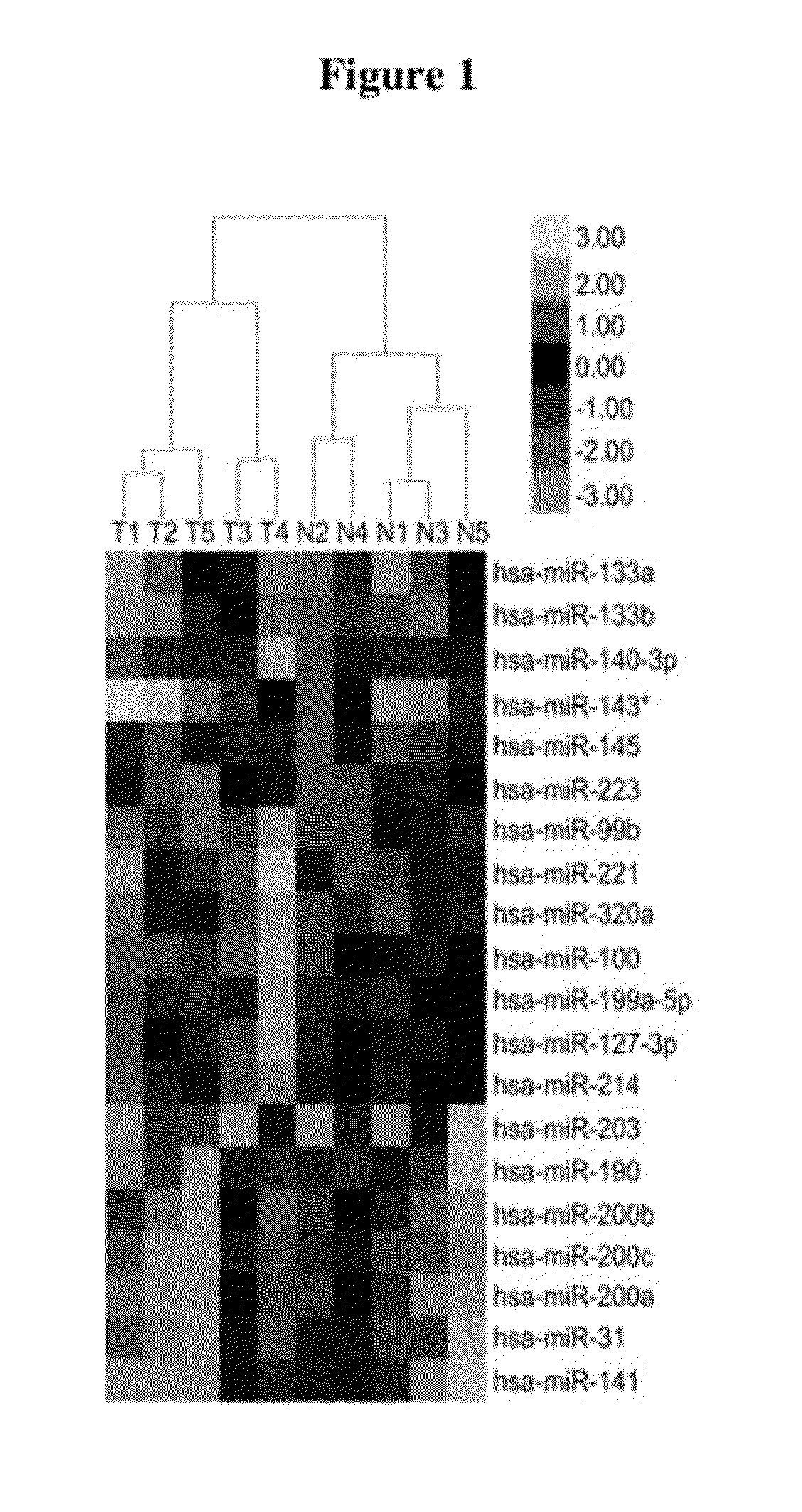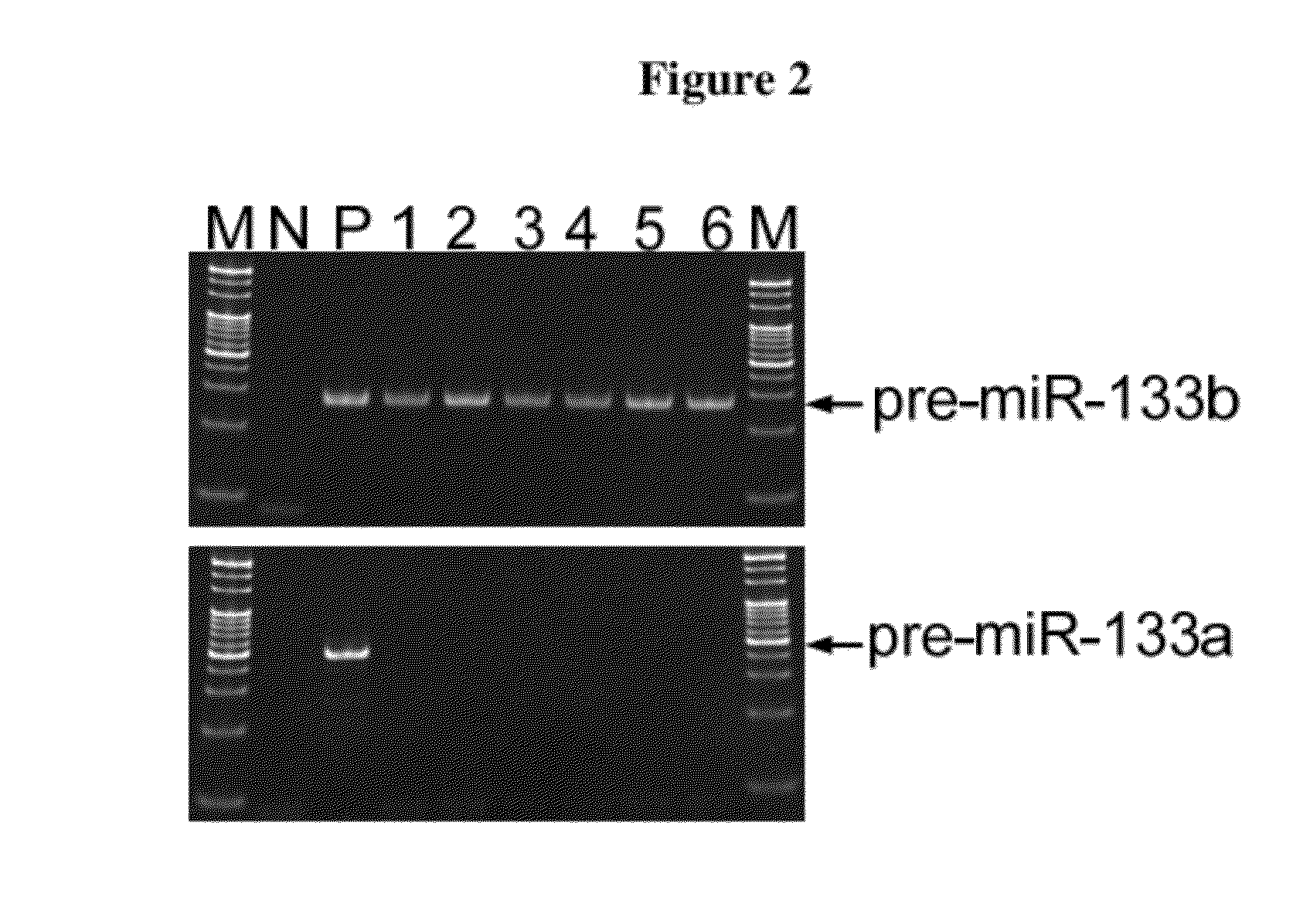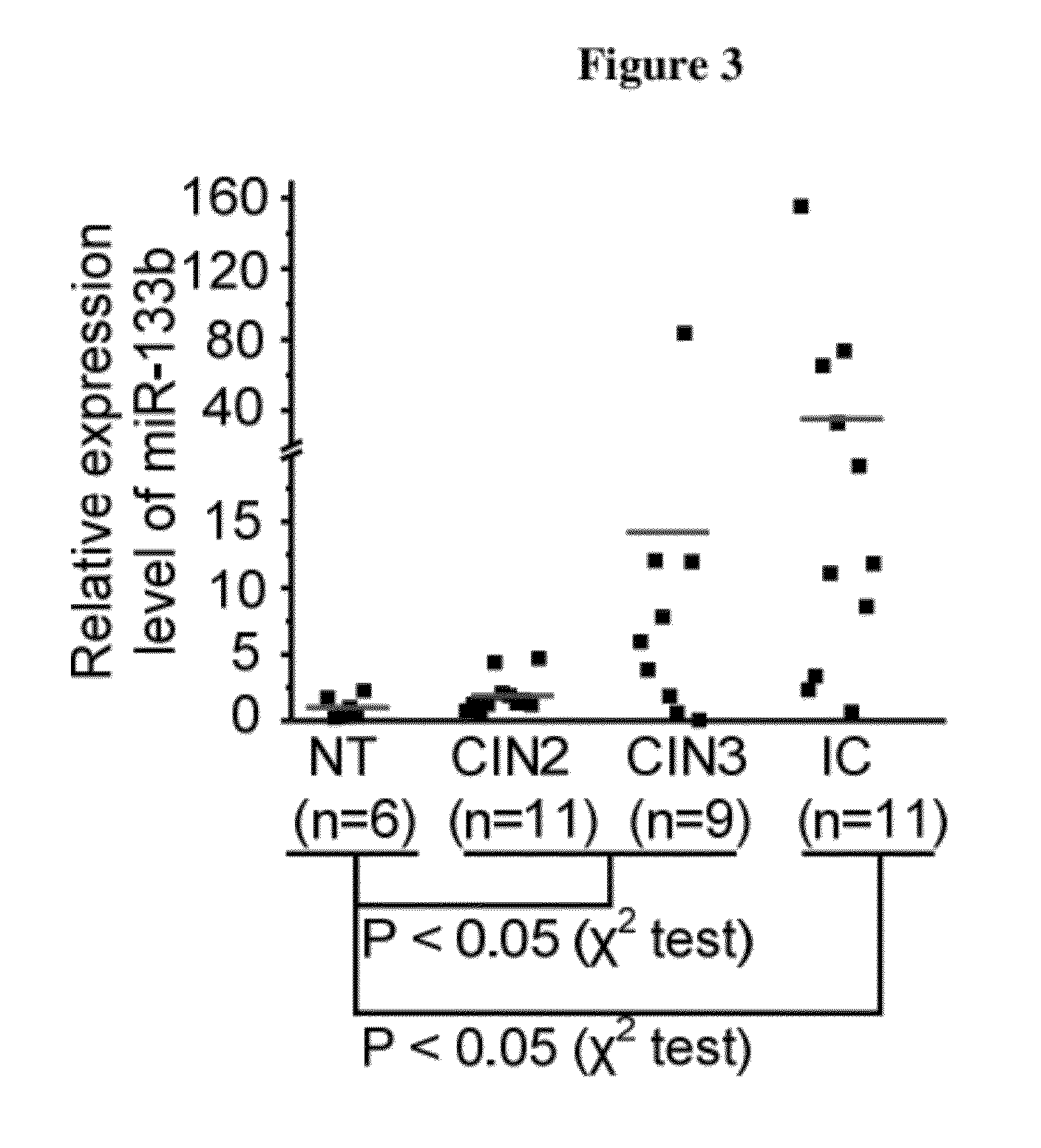Methods and compositions for the diagnosis and prognosis of cervical intraepithelial neoplasia and cervical cancer
- Summary
- Abstract
- Description
- Claims
- Application Information
AI Technical Summary
Benefits of technology
Problems solved by technology
Method used
Image
Examples
example 1
Preparation of Samples and Analysis of miRNA Levels by Using miRNA Microarray
[0191]Patients and Samples
[0192]Five pairs of cervical cancer tissues and corresponding normal cervical tissues were used. These specimens were obtained from patients in The First Teaching Hospital of Xinjing Medical University from 2006 to 2008 with informed consent and agreement. All tissue samples were from untreated patients undergoing surgery, and they were formalin-fixed paraffin-embedded (FFPE) until the extraction of miRNA. The tumor cell concentrations were evaluated and tumor histology was confirmed by a pathologist. The study was approved by the medical-ethics committee of The First Teaching Hospital of Xinjing Medical University.
[0193]Fabrication of the miRNA Microarray
[0194]Altogether 509 mature miRNA sequences were assembled and integrated into our miRNA microarray design, which comprised 435 human (including a further 122 predicted miRNA sequences from published references (Xie et al., 2005),...
example 2
Discrimination between hsa-miR-133a and hsa-miR-133b by RT-PCR
[0202]The results of Example 1 showed that the expression levels of hsa-miR-133a and hsa-miR-133b were up-regulated in cervical carcinomas. As shown in Table 1, mammalian hsa-miR-133 has two mature isoforms, hsa-miR-133a and hsa-miR-133b, which differ at a single 3′-terminal base, although the pre-miR-133a and -133b sequences are more different. Specific primers have been designed according to the pre-miR-133a and -133b sequences and used for discrimination of these two isoforms. The pre-miR-133a and -133b sequences can be downloaded from the following website: http: / / microrna.sanger.ac.uk / (Griffths-Jones, et al., Nucleic Acids Research (2006) Vol. 34, Database issue).
[0203]Primers used for the amplification of pre-hsa-miR-133a and pre-hsa-miR-133b are listed in Table 2. Total RNA from 6 normal cervical tissues and 6 cervical carcinomas were purified as described in Example 1. The reverse transcription (RT) reaction cont...
example 3
Analysis of miRNA Levels by RT-PCR
[0205]Total cellular RNAs were prepared from FFPE tissues as described in Example 1. Reverse transcriptase reaction (10 μl) contained 10 ng of total RNA, 2 μl of RT primer (Exiqon, Vedbaek, Denmark), 1× RT buffer, 0.2 mM each of dNTPs, 0.5 μl of reverse transcriptase and 0.5 μl of RNase inhibitor. The reactions were incubated in an MJ Research PTC-225 Thermocycler for 30 min at 50° C., 5 min at 85° C. and then held at 4° C. All reverse transcriptase reactions, including no-template controls, were run in duplicate. The RT-PCR employed a mercury LNA™ microRNA PCR System kit (Exiqon) and a LightCycler (Roche Diagnostics, Mannheim, Germany) following the manufacturer's protocols. The PCR reaction (20 μl) included 4 μl of 10× diluted RT product, 10 μl of SYBR® Green master mix (Exiqon), 1 μl of LNA™ PCR primer and 1 μl of Universal PCR primer (Exiqon). The reactions were incubated at 95° C. for 10 min, followed by 60 cycles of 95° C. for 10 s, 60° C. for...
PUM
| Property | Measurement | Unit |
|---|---|---|
| Fraction | aaaaa | aaaaa |
| Fraction | aaaaa | aaaaa |
| Length | aaaaa | aaaaa |
Abstract
Description
Claims
Application Information
 Login to View More
Login to View More - R&D
- Intellectual Property
- Life Sciences
- Materials
- Tech Scout
- Unparalleled Data Quality
- Higher Quality Content
- 60% Fewer Hallucinations
Browse by: Latest US Patents, China's latest patents, Technical Efficacy Thesaurus, Application Domain, Technology Topic, Popular Technical Reports.
© 2025 PatSnap. All rights reserved.Legal|Privacy policy|Modern Slavery Act Transparency Statement|Sitemap|About US| Contact US: help@patsnap.com



